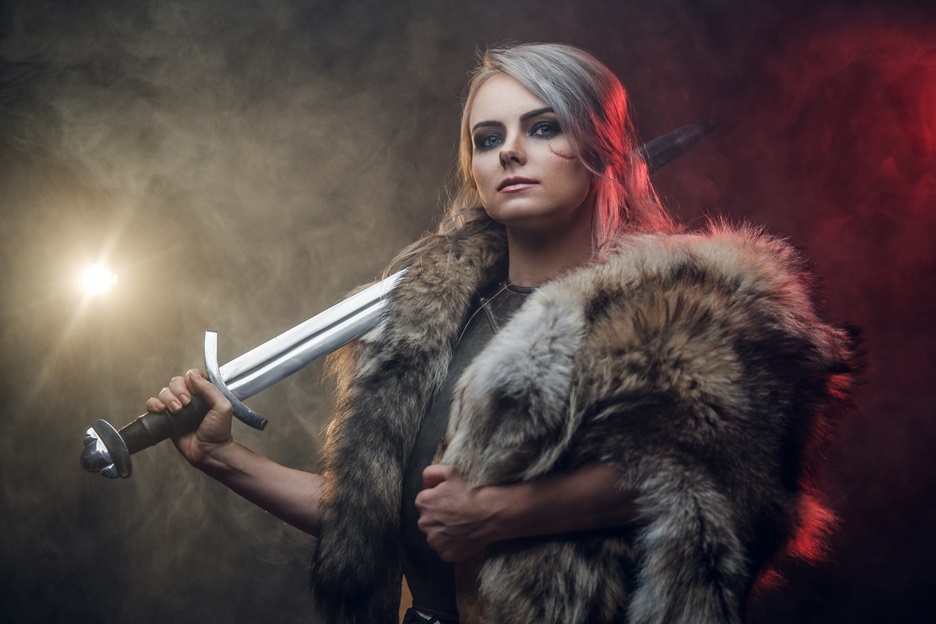The announcement of Ciri as the protagonist in The Witcher 4 has reignited intense discussions among fans. While some celebrate the choice as a natural progression of her character arc, others have voiced concerns—some grounded in lore, others reflecting broader societal biases. So, let’s unpack the two sides of the argument: the lore-based criticism and the misogynistic backlash.
Lore-Based Criticism: Valid Concerns Rooted in Canon
In Andrzej Sapkowski’s original Witcher novels, Ciri trains extensively at Kaer Morhen, learning swordplay, survival skills, and monster lore under Geralt and the other witchers. However, she never undergoes the Trial of the Grasses, a grueling and deadly mutation process that fundamentally transforms individuals into witchers. This means Ciri lacks the enhanced reflexes, toxin resistance, and supernatural senses that define traditional witchers. In the lore, these mutations are central to what makes someone a witcher.
Furthermore, Ciri’s identity has always been tied to her Elder Blood heritage. She possesses unique powers tied to time and space, making her more than just a monster hunter. Critics argue that reducing her arc to simply ‘being a witcher’ risks flattening her complex character and undermining the cosmic significance of her Elder Blood lineage.
These criticisms are fair and stem from a deep appreciation for the source material. Fans raising these concerns are not rejecting Ciri as a protagonist—they’re questioning whether her becoming a witcher aligns with the established lore.
The lore-based criticism of Ciri becoming a Witcher primarily stems from how Andrzej Sapkowski depicted both witchers and Ciri in his books. These concerns are centered around the biological and narrative constraints established in The Witcher universe, particularly regarding the process of becoming a witcher and Ciri’s unique role as the Child of Elder Blood. Below are the key points of contention:
1. The Trial of the Grasses and Witcher Mutations
In Sapkowski’s world, becoming a witcher isn’t merely about training with swords and learning alchemical recipes; it involves a brutal, near-fatal process called the Trial of the Grasses. During this process, candidates are subjected to intense alchemical procedures, mutagens, and magical enhancements that grant them superhuman abilities, including heightened reflexes, night vision, resistance to toxins, and extended lifespans.
- Ciri Never Underwent the Trial: In the books, Ciri trained at Kaer Morhen under Geralt and other witchers. She learned swordsmanship, combat tactics, and basic monster knowledge. However, she never underwent the Trial of the Grasses because the witchers deemed it too dangerous, and they no longer had the knowledge or means to perform the process successfully.
- No Mutations, No Witcher: Without the mutations, Ciri lacks the core physical and biological traits that define a witcher. She cannot process potions and decoctions the way Geralt can, nor does she have enhanced senses or toxin resistance. For purists, this biological limitation makes her status as a “witcher” technically invalid.
2. Ciri’s Unique Role as the Child of Elder Blood
Ciri is already one of the most powerful characters in The Witcher universe due to her Elder Blood heritage. This rare genetic trait gives her unparalleled magical abilities, including the power to travel between dimensions and manipulate time and space.
- Power Creep Concerns: Lore enthusiasts argue that giving Ciri the title of “Witcher” would diminish her unique identity. Her Elder Blood powers set her apart as someone destined for extraordinary purposes beyond just monster hunting.
- Narrative Inconsistency: In the books, Ciri’s destiny was always tied to her Elder Blood, political intrigue, and her place in larger cosmic events. Becoming a witcher was never presented as her final path. Forcing her into the traditional witcher archetype risks sidelining her magical potential and reducing her complexity to just being “Geralt 2.0.”
3. Witcher Identity Isn’t Just About Monster Hunting
Being a witcher isn’t just about killing monsters with swords; it’s about being part of a unique brotherhood with its own culture, traditions, and worldview. Witchers are often portrayed as outcasts, bound by their mutations to a life of alienation and distrust from society.
- Ciri Didn’t Share the Same Struggles: Ciri, while trained by witchers, was never fully part of their brotherhood. She wasn’t subjected to the same physical and emotional transformations that witchers go through, nor did she endure the same social rejection they face as mutated outcasts.
- A Different Destiny: In the books, Geralt himself emphasizes that Ciri was never meant to become a witcher. Instead, her path was shaped by her magical abilities and her connection to the larger political and magical conflicts of the world.
4. Narrative Closure in The Witcher 3: Wild Hunt
The multiple endings of The Witcher 3 offer distinct conclusions for Ciri’s story, depending on the player’s choices.
- Empress Ending: In one ending, Ciri becomes the Empress of Nilfgaard, symbolizing her acceptance of her noble destiny.
- Witcher Ending: In another ending, Ciri chooses to follow Geralt’s path and live as a witcher, though even this path isn’t portrayed as her being a “true witcher” in the mutated sense—it’s more symbolic of her independence and desire for freedom.
- Ambiguity Lost: Critics argue that canonizing Ciri as the Witcher in The Witcher 4 could undermine the player’s agency from The Witcher 3, where her fate was left open-ended.
5. Geralt’s Role in the Lore vs. Ciri’s
Geralt represents a classic witcher archetype: the gruff, mutated monster hunter who walks a morally gray path in a cruel world. Ciri, on the other hand, represents something fundamentally different—a child of prophecy, a wielder of Elder Blood, and a character whose struggles transcend the day-to-day life of a professional monster slayer.
- Risk of Simplification: Some fans worry that placing Ciri into Geralt’s boots as a traditional witcher risks oversimplifying her narrative. Her struggles and powers are vastly different from Geralt’s pragmatic monster-hunting lifestyle.
CD Projekt Red’s Response to Lore Concerns
CD Projekt Red has acknowledged these criticisms and promised that the narrative in The Witcher 4 will address these lore discrepancies thoughtfully. They’ve emphasized that Ciri isn’t merely “taking Geralt’s place” but will be explored as a distinct character with her own path, shaped by her experiences, powers, and choices.
The developers have suggested that Ciri’s path as a witcher will be framed as something unique to her—possibly a new interpretation of what it means to be a witcher, rather than simply copying Geralt’s model.
Misogyny: When Criticism Turns into Gatekeeping
However, not all criticism comes from a place of lore fidelity. A vocal subset of fans has opposed Ciri’s protagonism not because of lore inconsistencies, but because she’s a woman stepping into what they perceive as a traditionally male role. These arguments often lean on buzzwords like ‘forced diversity’ or ‘political correctness,’ rather than engaging with meaningful lore-based discussions.
This pattern isn’t new. Similar backlash was seen with Rey in Star Wars, Aloy in Horizon Zero Dawn, and Abby in The Last of Us Part II. The gaming and fantasy communities, despite progress, still wrestle with gatekeeping attitudes that resist change when it disrupts entrenched expectations about who gets to be the hero.
The Balance: CD Projekt Red’s Challenge
CD Projekt Red now faces the challenge of navigating these polarized perspectives. The developers have promised that Ciri’s arc in The Witcher 4 will respect the established lore while offering players a meaningful continuation of her story. Whether they can balance these expectations remains to be seen.
In the end, valid lore criticisms deserve thoughtful discussion, but it’s equally important to recognize and call out when criticism crosses the line into misogyny. Ciri’s journey, if handled with care, could mark an exciting new chapter in The Witcher saga—one that honors both her unique identity and the rich lore of the universe she inhabits.
Whether CD Projekt Red will “screw up” The Witcher 4 is a question that hinges on both their past track record and their current approach to game development. The studio has earned both immense praise and sharp criticism over the years, making the answer a matter of perspective, caution, and hope.
The Case for Optimism: CDPR’s Strengths
CD Projekt Red is undeniably one of the most ambitious studios in the gaming industry. With The Witcher 3: Wild Hunt, they delivered a masterpiece—an open-world RPG with deeply immersive storytelling, memorable characters, and complex moral choices. Ciri’s narrative in The Witcher 3 was handled with exceptional care, and her relationship with Geralt became one of the most emotionally resonant aspects of the game.
Additionally, The Witcher 4 (currently codenamed Polaris) is being built using Unreal Engine 5 instead of their proprietary REDengine, which caused significant technical challenges during Cyberpunk 2077’s launch. The partnership with Epic Games and access to their cutting-edge engine suggest a commitment to improving technical stability. The studio has also undergone internal restructuring and implemented better workflows to prevent the chaotic crunch periods that plagued earlier projects.
Narratively, the choice to focus on Ciri feels deliberate and considered. The developers have repeatedly stated that they aim to honor the lore while exploring Ciri’s unique role in the Witcher universe. They’ve also shown awareness of the controversies surrounding her potential status as a witcher, suggesting they’re actively working to address fan concerns.
The Case for Skepticism: CDPR’s Past Stumbles
While The Witcher 3 is widely celebrated, Cyberpunk 2077 was a stark reminder of CDPR’s fallibility. The game’s release was marred by bugs, performance issues, and over-promises that the final product couldn’t deliver on launch. Although CDPR has since worked hard to redeem Cyberpunk 2077 with updates and expansions, the initial damage to their reputation still lingers.
This history raises legitimate concerns:
- Overpromising: CDPR has a pattern of building immense hype and sometimes setting unrealistic expectations. If they overpromise again with The Witcher 4, they risk repeating the same mistakes.
- Balancing Fan Expectations: Ciri’s story is deeply beloved by fans, and there’s little room for narrative missteps. Striking the right balance between respecting the lore and pushing the narrative forward will be a difficult task.
- Technical Challenges: While Unreal Engine 5 brings promise, switching to a new engine always comes with a learning curve. Technical stability is not guaranteed.
The Ciri Question: Can They Do Her Justice?
The biggest challenge lies in how CDPR chooses to handle Ciri’s journey. She’s not just “Geralt 2.0”; her arc is tied to her Elder Blood heritage, her moral struggles, and her unique perspective on the world. Fans expect her to be portrayed as a fully realized character, not simply as a “female Geralt” or a power fantasy caricature.
The backlash—whether lore-based or misogynistic—adds another layer of pressure. If the writing feels inconsistent, forced, or dismissive of established lore, fans will notice immediately. However, if CDPR approaches Ciri’s character with the same care they showed in The Witcher 3, they have a strong chance of succeeding.
What Needs to Happen for Success
- Respect the Lore: Ciri cannot simply become a witcher in the traditional sense. Her arc must address her lack of mutations and highlight her Elder Blood powers as integral to her identity.
- Focus on Narrative Depth: Her journey must feel personal, meaningful, and distinct from Geralt’s path.
- Technical Stability: The game must launch in a polished state, avoiding the mistakes of Cyberpunk 2077.
- Clear Communication: CDPR must manage expectations transparently throughout development.
Final Thoughts
Will CD Projekt Red screw up The Witcher 4? The honest answer is: they could—but they don’t have to. The studio has shown both brilliance and flaws, and whether they succeed will depend on whether they’ve learned from past mistakes. The shift to Ciri is bold, and bold moves come with risks. If CDPR approaches her story with respect, avoids overpromising, and delivers a polished product, The Witcher 4 could be another landmark achievement.
For now, cautious optimism seems like the most reasonable stance. The developers know what’s at stake, and fans are watching closely.










